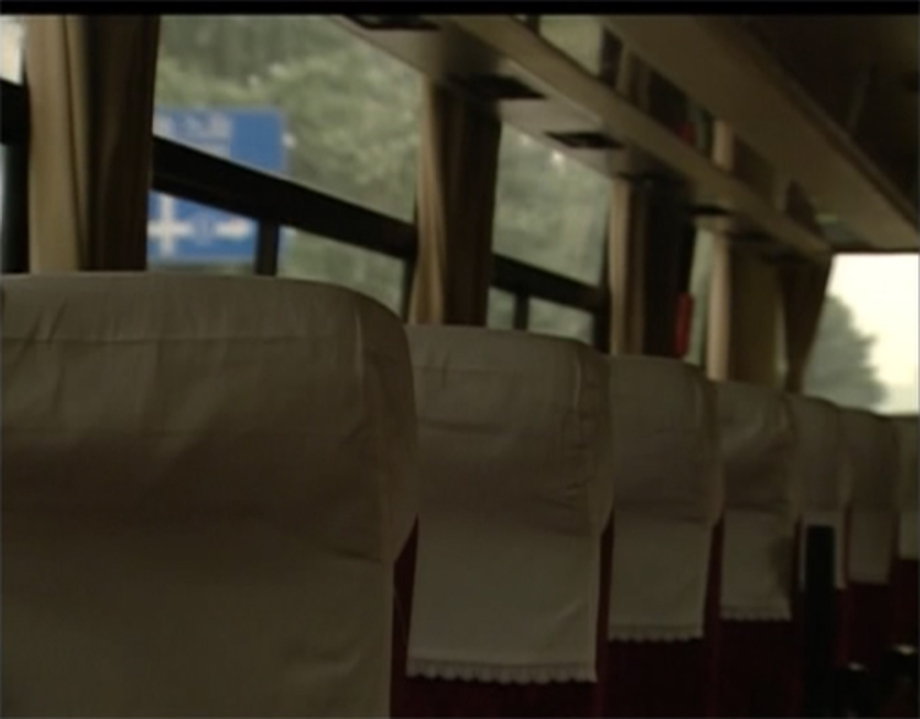
Absence of Tokyo
Between now and then, transformation is staggering.
Yasujiro Ozu made 5 “Tokyo” films. “Tokyo Chorus”, “Woman of Tokyo”, “An Inn in Tokyo”, “Tokyo Story” and “Tokyo Twilight”. In addition to these films, his films make frequent reference to Tokyo. “I Was Born But …” is the story of a “salary man” in the Tokyo suburb, “The Only Son” is another story of disillusion in metropolis, and “Ohayo” tells the parallel stories of men, women and children of Tokyo, to name the few.
However, his recurring reference to this ever-growing megacity provides the limited view of “Tokyo”. Most of the time, only impression you get is the blur of the city. In some cases, it is flat-out refusal to show any scenery, as in the taxi trip in “The Only Son”.
In “Tokyo Story”, Tokyo is almost non-existent. There are several shots of Tokyo exteriors but they are tall factory chimneys, unhealthy looking smokes and scenery of river bank. Hato-bus tour, an epitome of postwar Japanese consumerism, was shown in a rather cursory manner. Some other programmer picture directors would have made this Hato bus tour a full-blown showcase for Tokyo attractions. And what’s wrong with it? Window shopping in Ginza, strolling through Sensouji, and snapping group photos in front of Asakusa Place. It won’t hurt the narratives will it? Somehow, it seems as if Ozu is interested in blocking us from appreciating “Tokyo”. Yoshishige Yoshida, in his documentary, “The World of Yasujiro Ozu Cinema”, calls it “the absence of Tokyo”.

Why? Why is he not interested in showing us “Tokyo”? That’s the question you can have thousands of answers.
But before going into full analysis with a lot of vague vocabularies, we may follow the scenery of Tokyo as Ozu and his audience might have seen. These are not complete pictures, but history is made of the images slipped through between our fingers.
During his life, Ozu and his contemporaries (audiences) saw the almost complete destruction of the city twice. Once, earthquake, then the war.
Before the Earthquake
Yasujiro Ozu was a native of Fukagawa, Tokyo. Tokyo natives, especially from Fukagawa, Asakusa, Ueno, and other “Shitamachi” area, were called “Edokko“, meaning “Kids from Edo”. These Tokyo natives were symbol of “Iki“, or “Cool”. They spend all they earn (“Edokko never saves money for tomorrow”), they love theaters, sumo and other attractions, they have pride in what they wear, eat and appreciate. They don’t like to be pushed around. They are straightforward, love humanity and hate pretentiousness.
Then, how was the landscape of Tokyo when Ozu was a small child?


At first glance, these photographs show rows and rows of traditional Japanese architectures. Roofs of dark tiles, white plastered walls, unpaved streets. Actually, this landscape was not direct descendant from the earlier centuries. In 1881, City of Tokyo had issued the law to require buildings to be fire-proof. And many residential architectures were rebuild to meet this rule. The most popular architectural style was “dozo“, which you can see in these photos. Economic activity was slow, everything was neatly packed, people never knew the life beyond the river.

One thing we should note is that Ozu moved to Matsusaka, a rural city in Mie prefecture, when he was nine. Because the city was one of the important economy/transportation centers, the place was relatively rich. Ozu’s father remained in Tokyo. Living in the rural city and looking at Tokyo from outside must have made an impact on his view of Tokyo/rural area.
Even though the modern industrialization began its invasion to the Japanese cities around this time, it was slow process. Then, it hit Tokyo in September 1, 1923. The Earthquake. The whole city was in ruins.
(1) National Diet Library
(2) “Tokyo, City’s Meiji Era (Tokyo, Toshi no Meiji)”, Toru Hatsuda, Chikuma Shobo, 1994
(3) Koshasinbunko, http://www7b.biglobe.ne.jp/~ophl/index.htm


Pingback: Harvest of War (Part I) – Enic-cinE